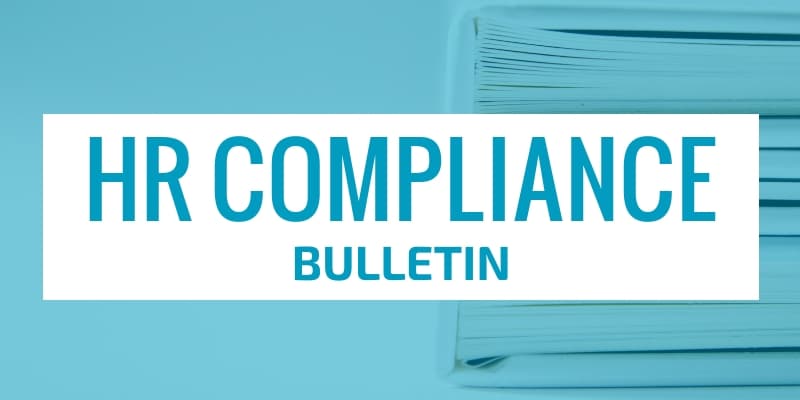 The U.S. Department of Labor’s (DOL) final rule on defining and delimiting the exemptions for executive, administrative, professional, outside sales and computer employees (EAP employees) became effective Jan. 1, 2020. Among other things, the final rule updated the standard salary level employees must satisfy to qualify for an overtime exemption.
The U.S. Department of Labor’s (DOL) final rule on defining and delimiting the exemptions for executive, administrative, professional, outside sales and computer employees (EAP employees) became effective Jan. 1, 2020. Among other things, the final rule updated the standard salary level employees must satisfy to qualify for an overtime exemption.
The final rule also allows employers to use nondiscretionary bonuses and incentive payments (including commissions) to satisfy up to 10% of the standard salary level if these payments are made at least on an annual basis.
To enable compliance with the nondiscretionary bonus option, the final rule allows employers to make a “catch-up” payment at the end of each 52-week period. This Compliance Overview explains how this provision can be used.
Sectioned Information
The final rule increases the standard salary level for the EAP exemptions to $684 per week ($35,568 per year).
The final rule increases the salary level for highly compensated employees to $107,432 per year.
The final rule allows employers to use nondiscretionary bonuses to satisfy up to 10% of an employee’s salary level.
Important Dates
Sept. 24, 2019
DOL announced the final rule for defining and delimiting the exemptions for executive, administrative, professional, outside sales and computer employees.
Jan. 1, 2020
Effective date for the final rule on defining and delimiting the exemptions for executive, administrative, professional, outside sales and computer employees.
Catch-up Payment Provision
Employers should review their EAP exempt employee’s compensation annually (every 52 weeks) to make sure all requirements for the exemption have been met. If at the end of the 52-week period the sum of the salary paid plus the nondiscretionary bonuses and incentive payments (including commissions) paid is less than the required salary level, the employer has one pay period to make up the shortfall for the 52-week period.
If the catch-up payment is not made within the pay period immediately following the 52-week period, the EAP overtime exemption does not apply and the employer will need to determine whether there are any overtime payments owed during the entire previous 52-week period.
Discretionary Versus Nondiscretionary Bonuses
As noted above, the final rule allows employers to use nondiscretionary bonuses to satisfy up to 10% of the standard salary level.
A bonus is discretionary when the employer retains the freedom to decide what should be done with that bonus. Freedom to decide may include the timing and amount of the bonus. Similarly, the bonus may be paid for any specific reason or for no reason at all. A discretionary bonus should not create an expectation of payment from the employee and it should be seen as arbitrary and almost whimsical. This means that the bonus cannot be due or tied to any prior promise, contract or agreement, or with employee performance (meeting specified goals or standards). To maintain bonuses as discretionary, employers should be careful and avoid any form of advance notice or other cautions that may, in any way, raise the expectation of payment.
Promised bonuses such as those announced to employees to induce them to work more efficiently or to remain with the firm are considered nondiscretionary. Examples include bonuses based on a predetermined formula (for example individual or group production bonuses), bonuses for quality and accuracy of work, retention bonuses, and commission payments based on a fixed formula.
DOL Example
The DOL has published the following example to illustrate how the catch-up provision works. Employee B meets the duties test for the professional exemption and is paid a salary of approximately 90% of the standard salary level ($616) in each workweek for the year. At the end of the year, the employer tallies Employee B’s nondiscretionary bonuses and commissions for the year, which amount to $3,300.
• $616 (salary) x 52 weeks = $32,032 paid in salary on a weekly basis.
• $32,032 (salary paid) + $3300 (bonuses earned) = $35,332 (salary plus nondiscretionary bonus paid).
Employee B must be paid a total of $35,568 per year to meet the salary level requirement ($684 x 52 weeks). Because the total of salary and bonuses paid ($35,332) is less than $35,568, the employer must, within one pay period, make a catch- up payment to Employee B to meet the salary level requirement in order to maintain the exemption. As shown below, the amount of the catch-up payment is $236.
• $35,568 (required salary for 52 weeks) – $35,332 (total paid) = $236 (required catch-up payment).
If the employer does not make the catch-up payment, the employee is entitled to overtime pay for any overtime hours worked during the previous 52-week time period.
This Compliance Overview is not intended to be exhaustive nor should any discussion or opinions be construed as legal advice. Readers should contact legal counsel for legal advice. ©2019 Zywave, Inc. All rights reserved.
More like this:


